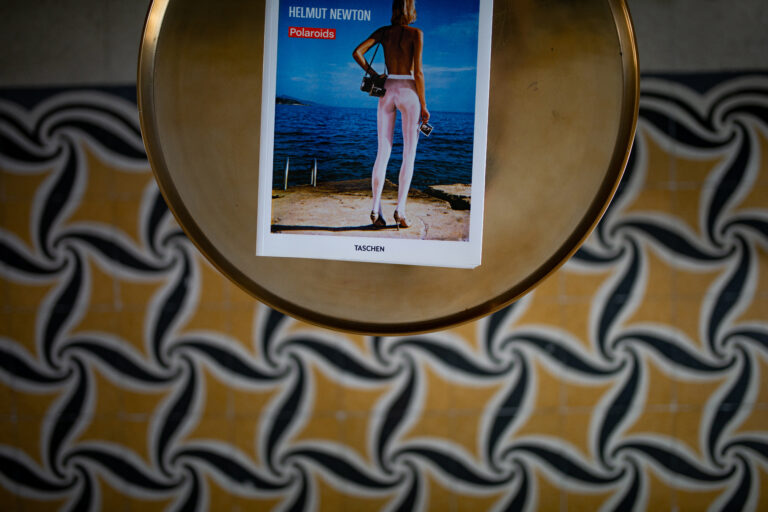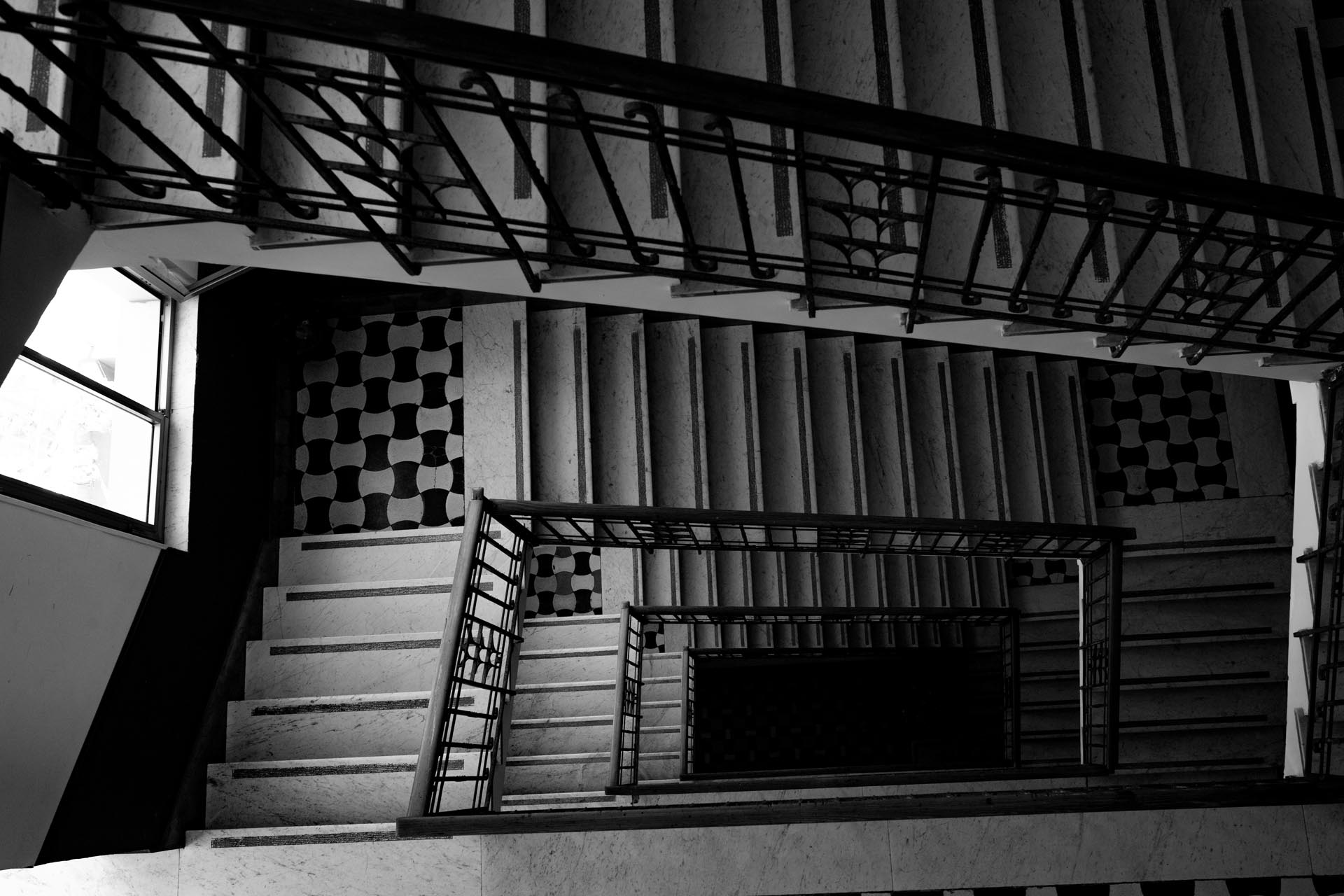
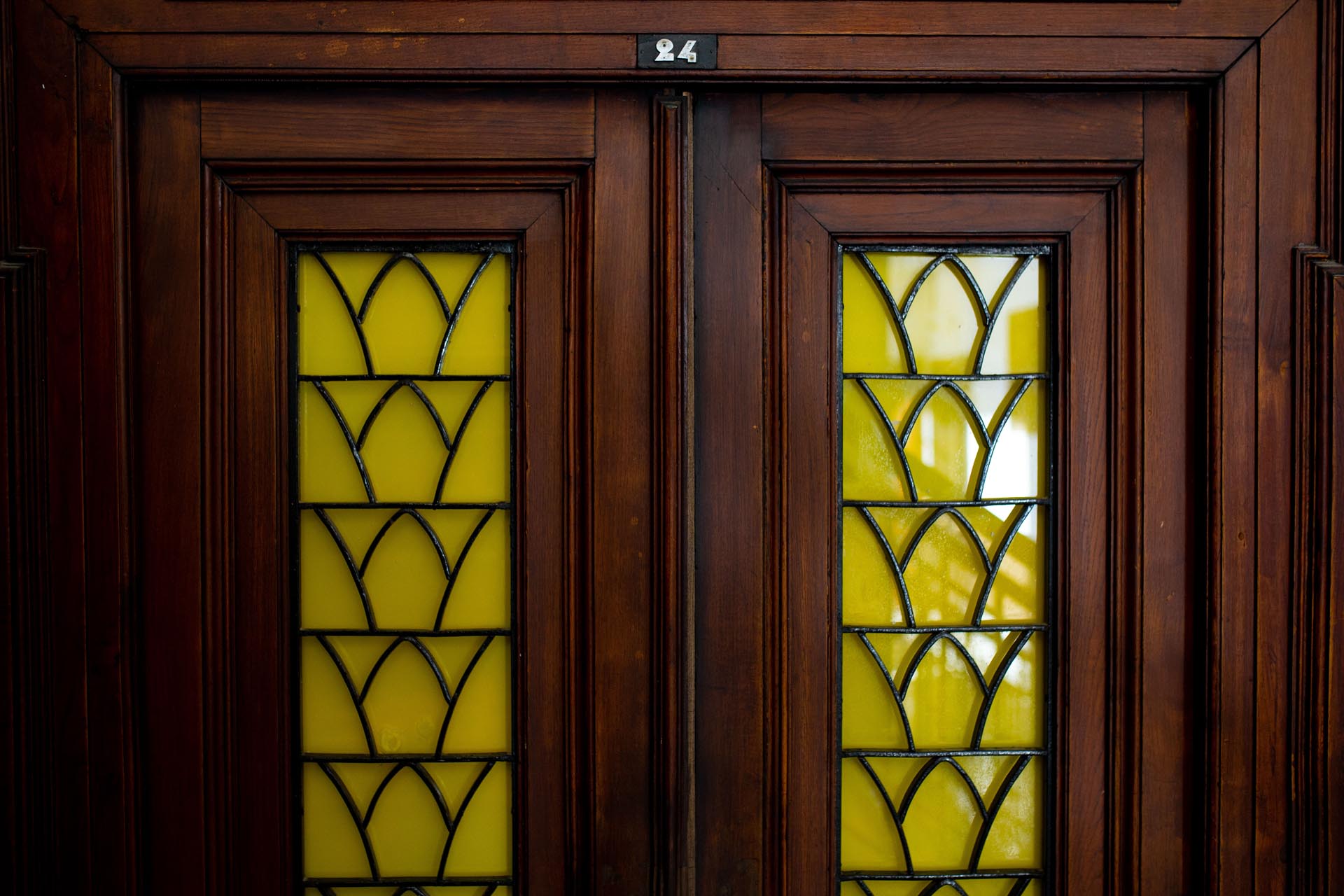
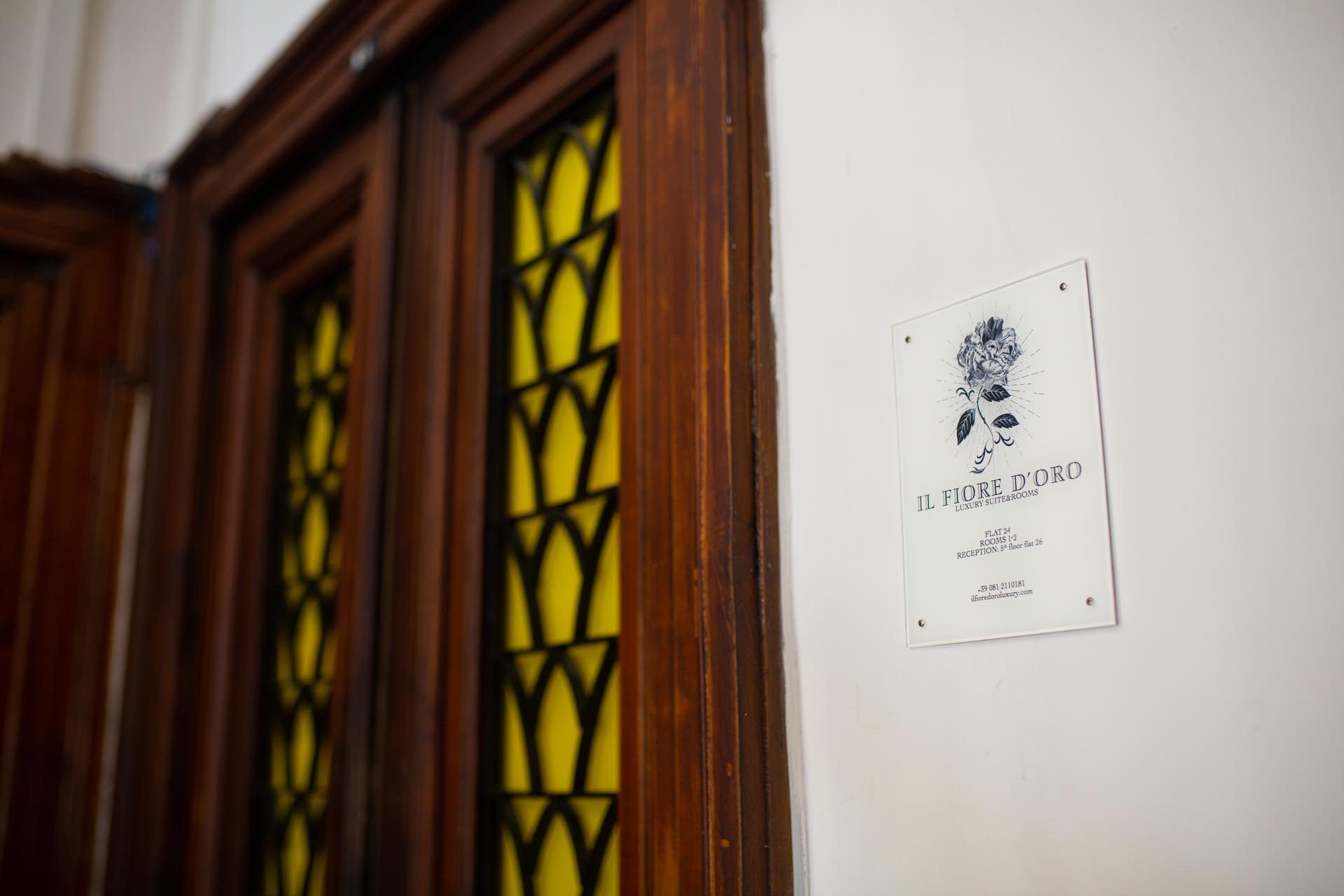
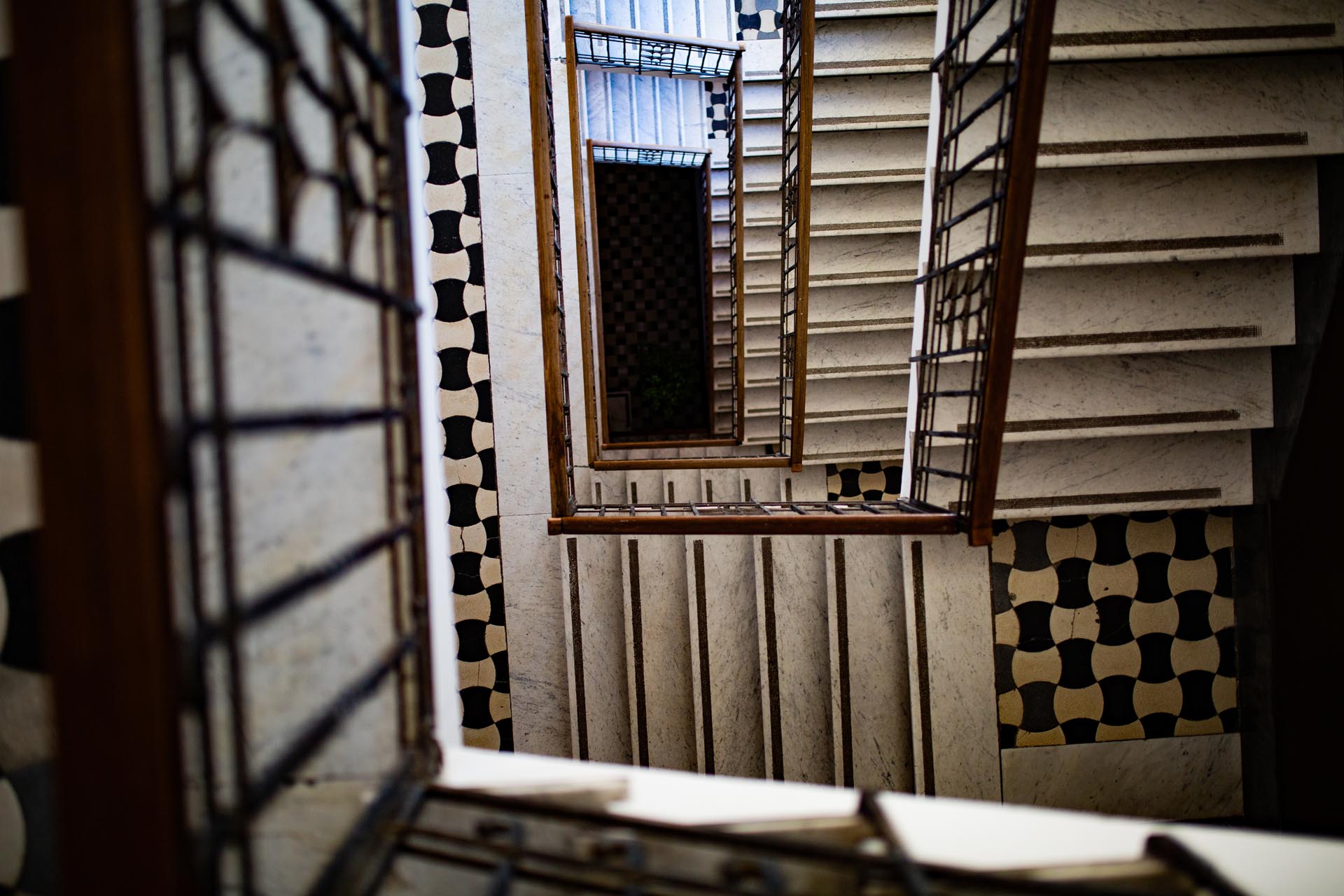
The parts of the building tell the story of that period through some very specific details: from the flooring to the rationalist railings, from the riggiole to the colors.
The environment is refined and comfortable but at the same time cozy as in the intimacy of a home. Crossing the threshold of the doorway of this ancient building, one will undoubtedly run into some resident intent on offering coffee to neighbors as in traditional Neapolitan comedies or be inebriated by the smell of a ragout that is pippea-ing – an onomatopoeic term that in Neapolitan means that sauce is simmering very slowly.
The design of the reconstruction years is characterized by formal experimentation and the use of a wide range of colors of the palette: from pastel tones- yellow, sage green, pink – to the most intense earthy tones: mud, brown, Pompeiian red.
Dating from the 1940s, the floorings are well-known: from the famous “graniglia” marble flooring, made up of fragments of stones of different sizes, to the flooring with geometric designs – mainly hexagons and rhombuses – which create very picturesque plays of shapes. Very bright colors can also be found on the floors, often boldly combined with cold colors such as black, white and turquoise-blue hexagons.
The most precious detail of IL FIORE D’ORO is in fact the floorings, the strong point of all the apartments. Each room has different polychrome Neapolitan riggiole.
The riggiole – from the Neapolitan riggiola – are a type of ceramic tile, often majolica-tiled and hand-decorated, typical of the Sorrento and Amalfi area, which make the furnishings unique.
The term is synonymous with tile or mattonella – “a piastrella” in the Neapolitan dialect. The person who lays the tiles, the tiler, is in fact called riggiularo in Neapolitan.
Neapolitan riggiola refers to the majolica terracotta tile, that is, coated with stanniferous glaze and then decorated with mineral colors: cobalt oxide for light blues and blues, chromium or copper oxide for greens, and iron oxide for yellows and reds.
